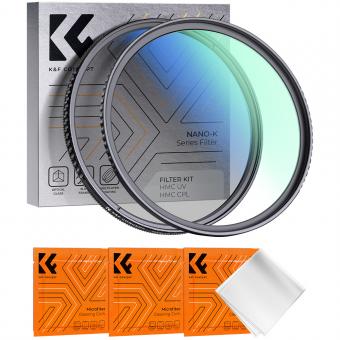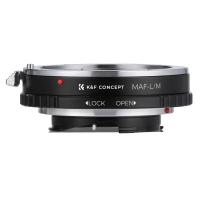Who Made The Light Microscope ?
The light microscope was invented by Dutch scientist Antonie van Leeuwenhoek in the 17th century.
1、 History of the light microscope
The light microscope, also known as the optical microscope, was invented in the late 16th century by Dutch spectacle makers Hans Lippershey and Zacharias Janssen. However, it was Antonie van Leeuwenhoek, a Dutch scientist, who made significant improvements to the design and used it to make groundbreaking discoveries in microbiology.
Van Leeuwenhoek's microscopes had a single lens and were capable of magnifying objects up to 300 times their original size. He used them to observe and describe microorganisms such as bacteria, protozoa, and spermatozoa, which were previously unknown to science.
Over the centuries, the light microscope has undergone numerous improvements and advancements, including the addition of multiple lenses, the use of polarized light, and the development of electron microscopy. These advancements have allowed scientists to study the structure and function of cells, tissues, and organs in greater detail, leading to significant breakthroughs in fields such as medicine, biology, and materials science.
Today, the light microscope remains an essential tool in scientific research and is widely used in laboratories around the world. Its continued development and refinement will undoubtedly lead to further discoveries and advancements in the years to come.
2、 Invention of the light microscope
The invention of the light microscope is attributed to several individuals who made significant contributions to its development. The earliest known microscope was created by Dutch spectacle maker, Zacharias Janssen, in the late 16th century. However, it was Antonie van Leeuwenhoek, a Dutch scientist, who is credited with the first use of a microscope to observe living organisms in the 17th century.
The light microscope continued to evolve over the centuries, with improvements made by scientists such as Robert Hooke, who used it to study plant cells, and Joseph Jackson Lister, who developed the achromatic lens, which improved the clarity of the microscope's images.
In recent years, there has been some debate over who should be credited with the invention of the light microscope. Some historians argue that the microscope was not a single invention, but rather a series of developments made by multiple individuals over time. Others point to the contributions of Janssen and Leeuwenhoek as the most significant in the microscope's early development.
Regardless of who is credited with the invention of the light microscope, its impact on science and medicine cannot be overstated. The ability to observe and study microscopic organisms and structures has led to countless discoveries and advancements in fields such as biology, medicine, and materials science.
3、 Early development of the light microscope
Who made the light microscope?
The credit for inventing the light microscope is often given to Dutch spectacle maker, Zacharias Janssen, and his father, Hans Janssen, in the late 16th century. However, there is some debate over the exact origins of the light microscope, as other inventors, such as Hans Lippershey and Cornelis Drebbel, have also been credited with its invention.
Regardless of its exact origins, the light microscope revolutionized the field of biology by allowing scientists to observe and study living organisms at a cellular level. Early microscopes were simple, consisting of a single lens and a light source, but they quickly evolved into more complex instruments with multiple lenses and improved magnification.
Today, the light microscope remains an essential tool in the study of biology and medicine. Advances in technology have led to the development of more sophisticated microscopes, such as confocal microscopes and electron microscopes, which allow scientists to observe even smaller structures and processes within cells.
In recent years, there has also been a growing interest in the use of light sheet microscopy, which uses a thin sheet of light to illuminate samples, reducing damage to living cells and allowing for longer observation times. This technique has the potential to revolutionize the field of live-cell imaging and could lead to new discoveries in the study of cellular processes and disease.
Overall, the development of the light microscope has had a profound impact on our understanding of the natural world and continues to be a vital tool in scientific research.
4、 Improvements in the light microscope
Who made the light microscope?
The light microscope was invented by Dutch scientist Antonie van Leeuwenhoek in the late 17th century. He was the first person to observe and describe microorganisms, which he called "animalcules," using a simple microscope that he had designed and built himself.
Improvements in the light microscope:
Over the years, the light microscope has undergone numerous improvements and advancements, making it an essential tool in scientific research and medical diagnosis. One significant improvement was the development of the compound microscope, which uses multiple lenses to magnify the specimen. This allowed for higher magnification and better resolution, enabling scientists to see smaller structures and details.
Another significant improvement was the introduction of fluorescent microscopy, which uses fluorescent dyes to label specific structures or molecules within a specimen. This technique has revolutionized the study of cell biology and has led to many important discoveries, such as the identification of different cell types and the visualization of cellular processes.
In recent years, there have been further advancements in light microscopy, such as the development of super-resolution microscopy, which allows for even higher resolution imaging of structures at the nanoscale level. This has opened up new avenues of research in fields such as neuroscience and molecular biology.
Overall, the light microscope has come a long way since its invention by Antonie van Leeuwenhoek, and its continued development and improvement have made it an indispensable tool in modern science.

































